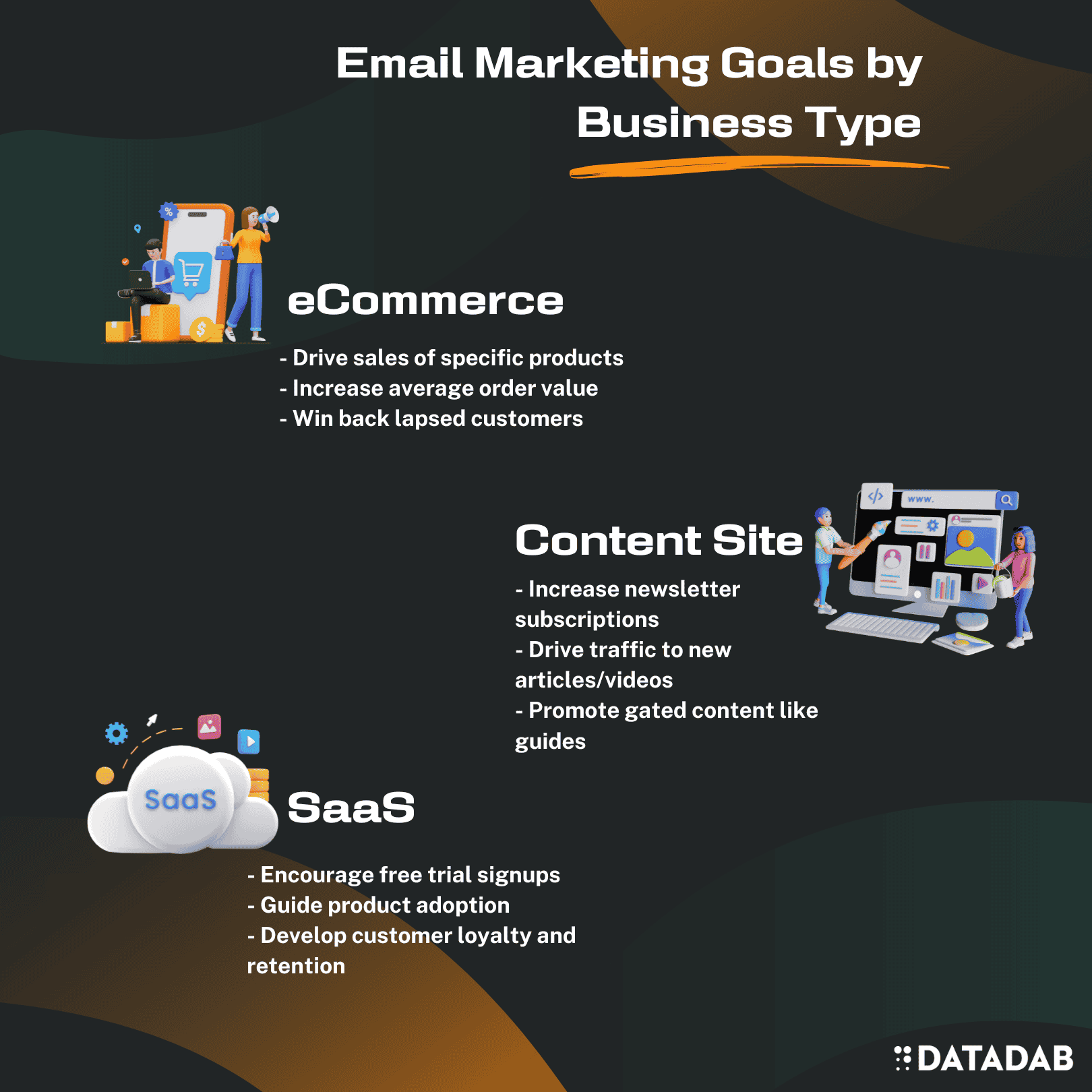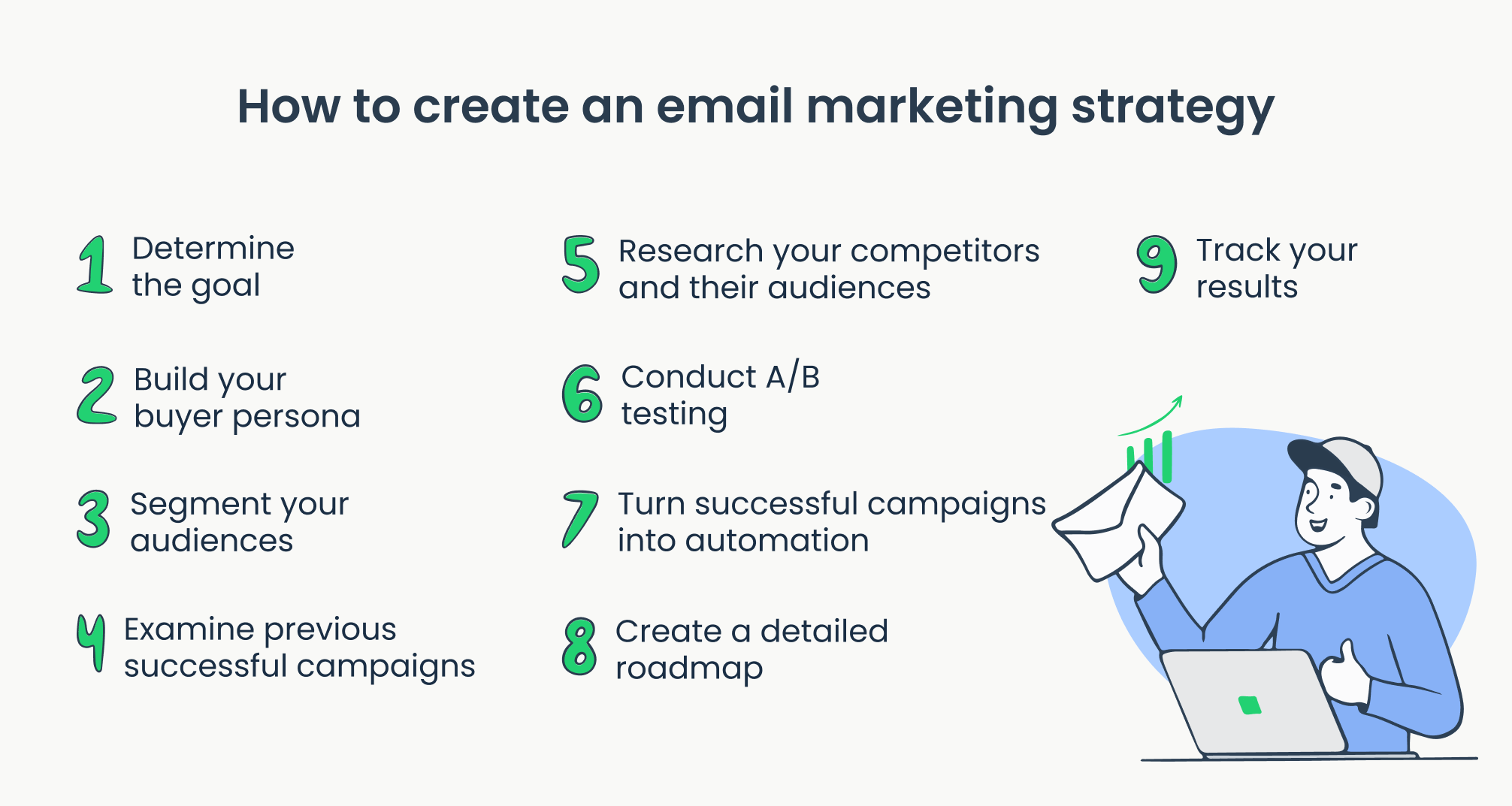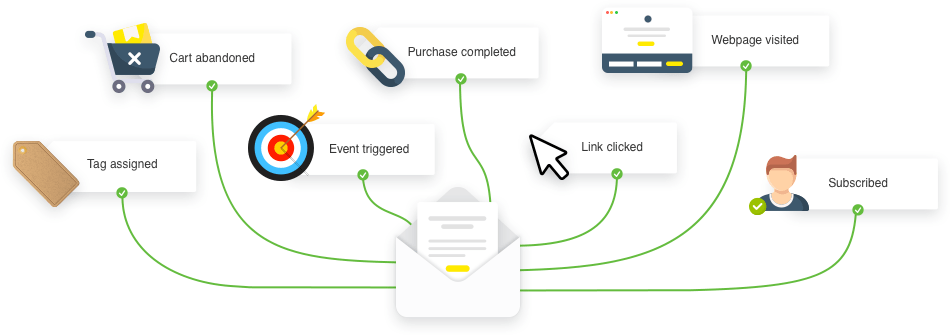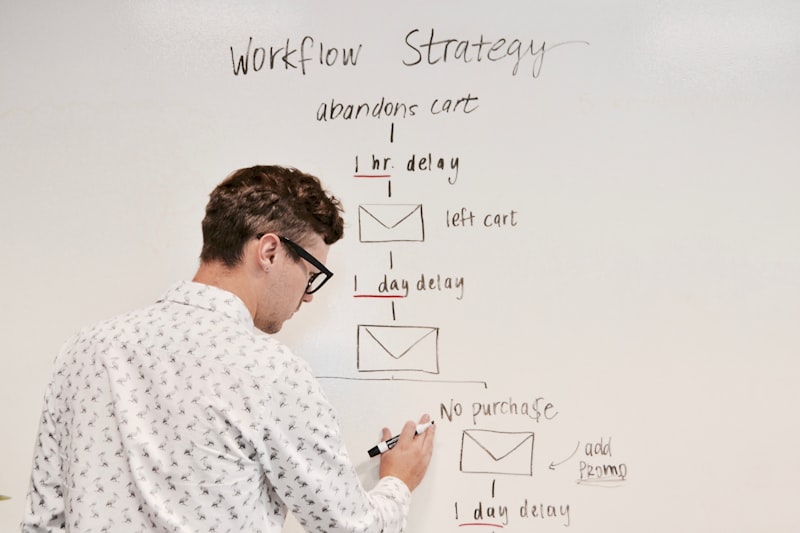If you were to shadow one of our email marketing specialist's for a day, you’d quickly see that this job is far from sending batch “spam” emails. It’s about understanding customers, speaking to them like human beings, and building real relationships through inboxes.
Email marketing sits at the intersection of data, technology, and creative communication. It uses research, automation, and design to connect with subscribers in a meaningful way. When done right, it’s personal, valuable, and drives powerful business results.
So what exactly does this job entail day-to-day? What are the keys to effective email marketing? Here’s an inside look at the responsibilities we’ve mastered, along with the proven tactics we employ to understand audiences and accomplish goals. While automation and technology are crucial, it's this human element that brings everything together into successful campaigns.

Developing the Email Marketing Strategy
The foundation of great email marketing is a strong strategy aligned to business objectives. The first task is to work with stakeholders to define goals for each email campaign and segment audiences accordingly.

For an e-commerce business, goals may include:
- Driving sales of specific products
- Increasing average order value
- Winning back lapsed customers
For a content site, goals could include:
- Increasing newsletter subscriptions
- Driving traffic to new articles or videos
- Promoting high-value content like guides or templates
Once goals are set, the audience is segmented to target each campaign. An e-commerce site may target segments like:
- Customers who recently made a purchase
- Customers who haven’t purchased in 3+ months
- Site visitors who browsed certain categories
A content site could target:
- Subscribers who regularly open newsletters
- Subscribers with low engagement
- Visitors from high-value referral sites
Tailored segmentation ensures content resonates and drives actions for each group.

Mapping the Customer Journey
A key part of the strategy is mapping out the customer journey to identify the right messaging for each stage.
For example, the journey for a software company may look like:
| Stage | Goal |
|---|---|
| Awareness | Build brand awareness and interest in the product |
| Consideration | Educate prospects to guide purchase decision |
| Purchase | Encourage free trial sign-up or first purchase |
| Adoption | Support onboarding and drive product usage |
| Loyalty | Develop loyal advocates who renew and refer others |
The content and cadence for each stage differs. Early on, the focus is on valuable educational content to capture interest. Closer to purchase, messaging incorporates product specifics, trials, and special offers. For loyal customers, communications share company news, product updates, and VIP perks.
Understanding the customer journey allows for nurturing subscribers appropriately based on their stage and crafting campaigns that convert.
![How to build an email marketing list [2023] | Zapier](https://images.ctfassets.net/lzny33ho1g45/4xfVKBanA51WwVm5iGWWxX/7332734ecb8ca8cea68faa49c66f3ae9/tips-for-growing-an-email-marketing-list.png)
Building and Managing Email Lists
The foundation of any email marketing program is the list. The first priority is growing a quality list by promoting opt-in points across the customer journey. This includes:
- Website pop-ups offering content upgrades like guides or webinars in exchange for an email address
- Website forms to download content like ebooks and whitepapers
- Social media and paid ads pointing to opt-in landing pages
- Offline tactics like trade show signups or business card collection
Close analysis of sign-up sources identifies the highest-converting channels for lead gen. For example, a popup on a pricing page may generate more sales-ready leads than a general homepage popup.
Just as important as lead capture is list management. Continuous review of list segments and monitoring engagement metrics enables the removal of hard bounces and unsubscribes. Key metrics to track include:
- List growth: Are more new subscribers being gained than lost through unsubscribes?
- Open and click-through rates: How well are subscribers engaging with content?
- Conversion rates: What percentage of opens and clicks result in the desired action like a sale?
Optimizing these factors ensures engaged subscribers are targeted and ROI is maximized.
![How To Write Effective Email Content? 12 Best Practices And Examples [2023] | Mailmunch](https://assets-global.website-files.com/5f3a33a074c2eb9e90f16437/63846790f3f4b216e51fc331_2.png)
Creating Valuable, Actionable Email Content
The key to driving conversions through email is consistently providing subscribers with valuable, relevant content. For each segment and customer stage, it’s important to consider what would compel the recipient to open an email and take action.
Here are some proven strategies for creating engaging email content:
Personalization
Personalizing subject lines and content makes subscribers feel seen. Personalized subject lines alone can lift open rates up to 26%.
Education
For subscribers in the consideration phase, focus on educating through how-to tips, industry guides, and thought leadership tailored to their interests. Education establishes trust and positions the brand as an authority.
Urgency
Strategic urgency can effectively motivate action, but it must be genuine. Limited-time sales or expiring offers entice subscribers to buy now rather than later. Countdown timers are a simple way to convey urgency.
Social Proof
Showcasing customer stories, reviews, and testimonials builds credibility. For a software company, a case study email with a client quote can be more powerful than a features-focused sell.
Multimedia Content
Emails with images, videos, GIFs, and interactive content achieve higher engagement. Multimedia makes for visually appealing emails that communicate key information clearly.
Clear Calls-to-Action
Every email needs clear CTAs to channel recipients into desired actions. Compelling verbs like “Get Started” or “Learn More” and optimized buttons drive clicks.
Mobile Optimization
With over half of emails opened on mobile, responsive design is essential. Crafting emails for easy mobile readability and placing the CTA above the fold improves conversions.
Testing and Optimization
A/B testing emails continually identifies improvements. Testing subject lines, content, design, timing, segmentation, and more provides data to refine campaigns.

Automating Campaigns and Reporting
While crafting great content is critical, execution also requires extensive coordination. Marketing automation platforms enable:
- Scheduling and tracking lifecycle campaigns like welcome series or abandoned cart flows
- Triggering behavioral campaigns based on user actions like page views or cart adds
- Grouping and segmenting recipients for targeted campaigns
- A/B testing emails to uncover optimization opportunities
- Monitoring performance analytics to see what's working
Automation allows timing and personalizing hundreds of campaigns based on real-time data.
For key campaigns and overall program reporting, clear analytics should be provided to stakeholders:
- Open, click-through, and conversion rates
- Sales or lead gen attributed to emails
- List growth and segmentation engagement
- Performance trends over time
- ROI compared to cost
Proving business impact is vital for continued resources and budget.

Optimizing Deliverability
A critical priority is ensuring emails reliably reach the inbox. Poor sending reputation means campaign optimization is worthless.
Best practices include:
- Obtaining explicit opt-in consent before sending
- Immediately honoring unsubscribe requests
- Monitoring complaint rates and adjusting content as needed
- Staying current on inbox provider guidelines
Proper domain authentication through SPF and DKIM also improves deliverability.
Monitoring key metrics like bounce and spam complaint rates flags potential issues before blacklisting. Quickly addressing any red flags maintains inbox placement.
With a comprehensive approach to strategic planning, targeted content creation, automation, and deliverability, each subscriber can become an engaged customer driving tangible business results through email. This is the power of the channel - and why optimizing it is so critical.
In summary, an email marketing specialist:
- Sets strategic campaign goals and divides audiences into targeted segments
- Maps the customer journey to craft targeted messaging
- Builds a quality subscriber list through opt-in promotion
- Creates valuable, engaging content tailored to each audience
- Automates nurturing workflows through email service providers
- Closely monitors campaign analytics and optimizes based on results
- Ensures excellent deliverability through inbox provider best practices
By mastering both creative messaging and tactical execution, meaningful connections are made with customers through the emails they engage with daily. Effective email marketing provides unmatched ROI across the entire customer lifecycle.
FAQ
What are some tips for creating an effective email marketing strategy?
Your email marketing strategy should stem directly from business goals. What specifically are you trying to achieve through email? Increased sales revenue? More newsletter subscribers? Improved customer retention? With goals defined, segment your audience and map out targeted messaging for each stage of the customer journey. Those in early awareness stages need educational content to nurture interest, while loyal customers benefit most from loyalty rewards and new feature updates. Define success metrics, craft relevant content for each stage, and schedule campaigns to sync with the customer's path. Ongoing testing and optimization is key to improving results over time.
How do you build a quality email subscriber list?
Focus on generating email sign-ups through your website, digital ads, social media, and other channels. Prioritize high-value pages and off
How do you create compelling email content?
Compelling content is valuable, relevant, and tailored to your recipients. Personalize content with subscriber names, interests, and attributes whenever possible. Educate subscribers early on and promote gated content guides to build trust. Use urgency close to conversion with limited-time offers. Validate claims through social proof like customer testimonials. Optimize content for easy mobile readability. Use clear calls to action with action-driven verbs. A/B test different content to see what resonates best. Integrate multimedia like images, GIFs and video when helpful, not gratuitous.
What email marketing automation tools are available?
Top email service providers offering automation include Mailchimp, Constant Contact, Campaign Monitor, GetResponse, ConvertKit, and Omnisend. Features allow you to build lists, create templates, set up workflows, integrate with CRMs, customize campaigns, segment subscribers, deploy triggers, and analyze results. Many platforms offer free plans for smaller lists then scale up based on needs.
How do you track and analyze email performance?
Key metrics to closely monitor for every campaign and overall program include open rate, click-through rate, conversion rate, average order value, revenue per email, subscriber growth and churn, segmentation engagement levels, and campaign ROI. Platform analytics provide these insights. Assess trends over time. Build campaign reports focused on impact. A/B test to continuously raise performance benchmarks. Attribution modeling helps quantify email's influence within the broader conversion journey.
What makes an email subject line effective?
Strong email subject lines pique curiosity, convey value, and encourage opening. Tactics include using the recipient's first name, numbers, urgency cues like "limited time," value-focused words like "New," question and command verbs like "See" and "Get," and specificity like "Article on [Topic]." Avoid overused phrases like "Newsletter Inside!" Test at least 3 subject line variants per campaign to determine what works best for each audience segment.
How do you ensure emails land in the inbox?
Follow inbox provider best practices, obtain explicit consent before adding any contact, honor unsubscribe requests immediately, and monitor feedback loops using an authenticated system like SenderScore. Scrub your lists regularly, segment based on engagement, and design for spam filters. Ensure proper SPF, DKIM, and DMARC setup for sender authentication. Send consistently, spread volume over time, and maintain a good complaint-to-delivery ratio. Deliverability takes ongoing focus, but is critical.
What makes email marketing so effective?
Email combines the reach of digital media with the personalization of direct mail. With nearly 4 billion inboxes in use globally, no other channel has such ubiquitous, instant access to potential customers. Email offers exceptional ROI thanks to detailed targeting abilities, automation, and measurability. Marketers can segment audiences, trigger messages based on behaviors, dynamically customize content, and accurately track conversions. This level of personalization and optimization drives results.
How do you coordinate email with your broader marketing strategy?
A unified multichannel approach is key. Use website or social ads to promote opt-in incentives, driving list growth. Send emails with links back to landing pages and blogs to increase site engagement. Maintain consistent branding and messaging across channels. Integrate email with your CRM to inform lifecycle targeting and enhance data. Ensure other teams recognize email's value so strategies align. Build direct integrations between platforms to combine subscriber and customer insights.
What skills make an effective email marketer?
A blend of creative and analytical strengths is ideal. You need writing skills to craft engaging content, design abilities to make emails visually appealing, detail-orientation to follow best practices, project management to juggle campaigns, analytical acumen to interpret data, communication skills to liaise across teams, and passion for connecting with customers. Both the strategic and hands-on, tactical aspects of email marketing require expertise. Ongoing learning is a must as trends and tech evolve.






